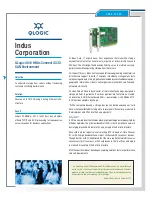
IOT-WORKSHOP
DTU-H10X
Wi-Fi/Ethernet to RS485/RS232 Server User Manual
http://www.iotworkshop.com
27
3.7.
Upload ID
This function only applies to the the device as a TCP client (Socket A or Socket B), in front of the
data when the device connected to the server, it will add with two bytes of ID (ID the range is 0 ~
65535, the high byte first, and the low byte behind) plus two bytes ID radix-minus-one
complement, e.g the default ID is 1111, then the "0x57 0x04 0xfb 0xa8" will be sent to the server.
There are two ways to upload their own id: one is to upload their own id for connection to the
server for the first time;The other is a plus id in front of each data. ID number related parameter is
set in the "serial port and other Settings" section of the web, build joint function of ID for the first
time, and each data with the function of ID are opened by default.
May also use the AT command to set the related parameters. Refer to AT+REGXX command for
detail.
3.8.
Keepalive
When the TCP connection becomes abnormal between DTU device and server, the device will
detect this abnormal status and reconnect to server if it works in TCP client. When it works in
TCP server, it will release the TCP resources for next conection.
3.9.
Multiple STA Parameters
When device is in the STA mode, if it loose network signal when the signal is too low, it will
automatically switch to the other AP network (switching network automatically restart).
This function is disabled by default.
3.10.
Websocket(Reserved)
Contact us for detailed application.
3.11.
Parameters Setting
device supports two methods to configuration parameters: Web Accessing and AT+instruction set.
Web accessing means users can configure parameters through Web browser. When device
connected to wireless network, parameters configuration can be done on a PC connected to the
same wireless network. AT+instruction set configuration means user configure parameters
through serial interface command. Refer to “AT+instruction set" chapter for more detail.
Notes:
We can customized the parameters setting as customer request and ship devices with these
parameters as factory default configuration. It will reduce
user‟s device configuration time for
mass production. Also, if user need different parameters setting for every device, we can provide
the
auto-configuration tool
to speed up the device conguration duration. Please contact our
technical interface to acquire this tool if required.
3.12.
Palmodic Signal
Base on selected factory default setting, nReady signal can have two output statuses:
Status One: The device
will output “0" after normal boot up. This signal used to judge if
device finish boot up and ready for application.















































